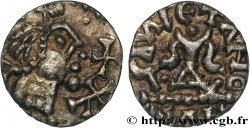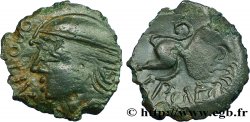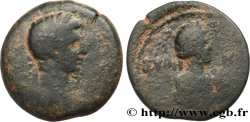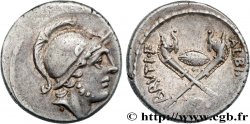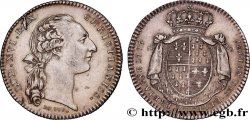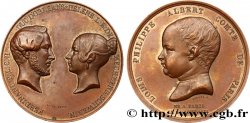Live auction - bmv_517300 - MEROVINGIAN COINAGE - BANASSAC (BANNACIACO) - Lozere Triens, SIGEBERT monétaire
You must signin and be an approved bidder to bid, LOGIN TO BID. Accounts are subject to approval and the approval process takes place within 48 hours. Do not wait until the day a sale closes to register. Clicking on "BID" constitutes acceptance of the terms of use of cgb.fr private live auctions.
Bids must be placed in whole Euro amounts only. The sale will start closing at the time stated on the item description; any bids received at the site after the closing time will not be executed. Transmission times may vary and bids could be rejected if you wait until the last second. For further information check the Live auction FAQ
All winning bids are subject to a 18% buyer’s fee.
All winning bids are subject to a 18% buyer’s fee.
| Estimate : | 5 000 € |
| Price : | no bid |
| Maximum bid : | no bid |
| End of the sale : | 05 March 2019 15:47:45 |
Type : Triens, SIGEBERT monétaire
Date: (VIIe siècle)
Mint name / Town : Banassac
Metal : gold
Diameter : 12,5 mm
Orientation dies : 6 h.
Weight : 1,33 g.
Rarity : R3
Coments on the condition:
Ce triens est frappé sur un flan large et légèrement irrégulier. Exemplaire présentant de hauts reliefs. Le revers semble présenter le départ d’un grènetis à droite du calice
Catalogue references :
Obverse
Obverse legend : ANÉPIGRAPHE.
Obverse description : Tête diadémée, à droite ; diadème perlée ; calotte et bouton occipital ; devant le profil, palme à trois brins.
Reverse
Reverse legend : GAVLETANO FI // BAH.
Reverse description : Calice à deux anses, posé sur une ligne d’exergue.
Commentary
Les triens de ce type sont attribués au monétaire SIGEBERT et sont relativement abondants ce qui a permis d’en réaliser une étude précise, avec des différenciations parfois subjectives. Cet exemplaire se caractérise par la présence d’une palme à trois brins et FI en fin de légende du revers.








 Report a mistake
Report a mistake Print the page
Print the page Share my selection
Share my selection Ask a question
Ask a question Consign / sell
Consign / sell
 Full data
Full data
